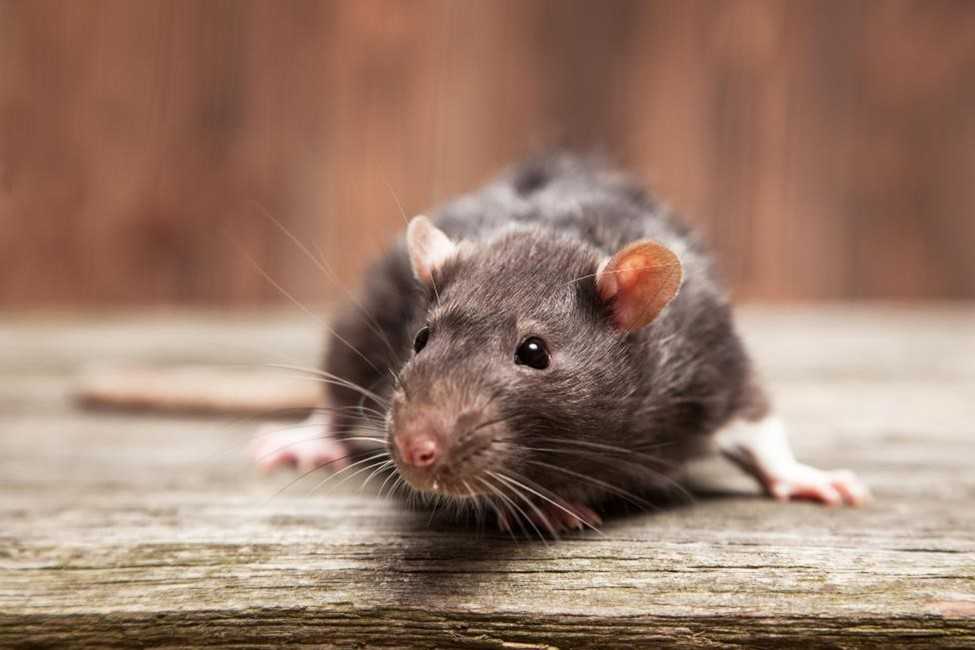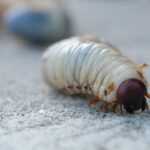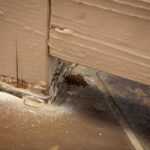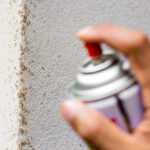Don’t let common household pests like rats and mice turn your house into their new winter home! As the fall and winter temperatures drop, mice and rats don’t hibernate, but will instead be on the lookout for warm places to spend the winter. If your house is nice and cozy, these rodents are likely to notice and can find even the smallest gaps to use to get inside.
Sometimes, you’ll discover a clear sign of an infestation—finding a rat in the kitchen, discovering a mouse nest in the engine of the car you haven’t run for a while, or seeing mice running around the basement. Other times, however, it can be easy to miss the subtle signs of a rodent infestation when mice or rats are better hidden. Keep reading to learn more from the experts at PURCOR on how to recognize a rodent infestation, and on where hard-to-find mice and rats could be hiding.
What are the signs of a mouse infestation?
Seeing multiple rats or mice in your home is an obvious sign of a rodent infestation, but there are some other more subtle signs you can look for to catch rodents. Even if you haven’t seen rodents scurrying about, take note if you notice the following:
- Strange noises in the walls (scratching, gnawing, scurrying etc.)
- Small droppings or urine stains, especially around the kitchen
- Tiny chew marks on surfaces, including suddenly frayed/chewed electric cords and holes in food packaging
- Seeing nesting materials like shredded papers, textiles, insulation, leaves, etc.
- Rodent footprints, tail-drag marks, and/or smudge marks along walls
- Unusual bad odors
If you notice a few of these signs around your home, there’s a good chance you have a rodent infestation. Since mice are nocturnal and like to be hidden, you should investigate these signs further, even if you haven’t seen a mouse or rat. Recognizing these indicators is crucial to preventing a mice infestation effectively. To get help discovering a rodent population, contact PUCOR!
Where do mice and rats hide in a house?
Although it’s not at all unheard of to see rats around your house, an infestation can still be happening even if you don’t spy any rodents. Rats and house mice prefer to nest in places where they won’t be disturbed, so you usually won’t stumble across a nest out in the open.
Instead, expect rat nests to be in places you don’t usually check, like behind appliances, in unused drawers, under cabinets, in undisturbed areas of a garage, in crawl spaces, or even in false ceilings or walls. Gaps under garage doors can also serve as entry points for mice into homes. Although some of these spaces are easy to check, finding mice or rats in your walls or other hidden places can be a bit more difficult.
After noticing signs of a rodent infestation, try doing a search for a rat’s nest, but don’t worry if you can’t find one. The pest control experts at PURCOR can help you with complete rodent control, from finding and removing rodents to preventing future issues.
Indoor Hiding Spots
Mice are notorious for their ability to squeeze into tiny spaces, making them expert hiders in homes. Some common indoor hiding spots for mice include:
- Behind kitchen cabinets and appliances: Crumbs and spills can accumulate in these areas, providing a food source that attracts mice.
- Inside wall voids: Mice can nest and raise their young in the hidden spaces within your walls, making it a perfect spot for a mouse nest.
- Under furniture: Beds and couches can harbor dust bunnies and lost items, creating a cozy environment for mice to hide.
- Cluttered areas: Attics, basements, and garages often have boxes and storage containers that provide excellent hiding places for mice.
- Inside pantries and cupboards: These areas offer easy access to food and water sources, making them prime locations for mouse activity.
- Behind toilets and sinks: The moisture and humidity in these areas can create an ideal environment for mice to thrive.
Identifying these hiding spots can help in addressing a mice infestation.
Outdoor Hiding Places
While mice are often associated with indoor infestations, they can also be found hiding in outdoor areas. Some common outdoor hiding places for mice include:
- Under decks and porches: Leaves and debris can accumulate here, providing shelter for mice.
- In gardens and landscaping: Plants and flowers can offer both shelter and food sources for mice.
- Near bird feeders and pet food dishes: Easy access to food can attract mice to these areas.
- In woodpiles and compost heaps: The warmth and moisture in these spots can create an ideal environment for mice.
- Under outdoor furniture: Patio sets and grills can accumulate crumbs and spills, attracting mice.
- In nearby fields and meadows: Tall grasses and weeds provide natural shelter and food sources for mice.
By being aware of these common hiding spots, both indoors and outdoors, you can better identify and address potential mouse infestations in your home. Being aware of outdoor hiding spots can help prevent a mice infestation from spreading indoors. If you suspect you have a rodent problem, don’t hesitate to reach out to PURCOR for professional pest control assistance.
Common Mouse Hiding Spots in Homes
Mice are notorious for their ability to squeeze into tiny spaces and hide in hard-to-reach areas. These small rodents can make themselves at home in various nooks and crannies around your house. Some common mouse hiding spots in homes include:
- Behind kitchen cabinets and appliances: Crumbs and spills can accumulate in these areas, providing a food source that attracts mice.
- Inside wall voids and attics: Mice can nest and raise their young in the hidden spaces within your walls, making it a perfect spot for a mouse nest.
- Under furniture and floorboards: Beds and couches can harbor dust bunnies and lost items, creating a cozy environment for mice to hide.
- In cluttered areas such as closets and garages: Boxes and storage containers provide excellent hiding places for mice.
- Near food sources such as pantries and pet food storage: These areas offer easy access to food and water sources, making them prime locations for mouse activity.
- In warm and cozy areas such as near heating vents and fireplaces: The warmth and seclusion make these spots ideal for mice to sleep and nest.
Mice tend to prefer dark, quiet, and secluded areas where they can feel safe and protected. They are also attracted to areas with easy access to food and water. By being aware of these common hiding spots, you can better identify and address potential mouse infestations in your home.
Where do rats and mice sleep in a house?
Mice and rats living in a home will make nests to help stay comfortable. They often will make nests close to a food source, so you are fairly likely to discover a nest around your kitchen, or another area of your house that might have food in it. Mice nests are typically found in secluded spots with minimal human activity, where they can find food and water. They also tend to stay close to their nests while looking for food, so if you see a mouse, there’s a decent chance you’re close to its nest, and you can start searching for a nest in that area of the house first.
What does a rat or mouse nest look like?
So, what does a mice nest or rodent nest look like? Indoor rodents will generally build up nests with small or shredded pieces of grass or plant material, cotton, paper, fabric, or even insulation. Expect a nest to look something like a ball or a very loosely woven bird’s nest.
When discovering a rodent nest, keep in mind that rodents are very unhygienic. Fleas and other bugs may be attracted to mouse and rat waste, adding additional health concerns to having a rodent infestation. If you discover a rodent nest, you’ll want to remove it as soon as possible; PURCOR’s team can help safely remove mouse and rat nests in our service areas.
Why are there rodents in the house, anyway?
The shelter and food found in our homes are naturally very appealing to rodents, so you don’t have to have a particularly dirty or broken-down home to end up with a rodent infestation. Mice and rats can squeeze into very small gaps around your home or garage’s floors, walls, doors, and windows. Mice tend to be noticeable intruders even due to their small size, and caulking these areas can help prevent rodents.
Additionally, keeping food and trash sealed up and cleaning up any food crumbs can help limit the chances of a mice infestation and some of your home’s appeal to rodents. However, it can be nearly impossible to fully dissuade rodents from entering a home if there’s a way for them to come in. If you need help identifying how mice or rats got in your garage or home, pest control professionals can help!
Removing Mouse Nests and Infestations
Removing mouse nests and infestations requires a thorough and multi-step approach. Here are some steps to follow:
- Identify and seal entry points: Mice can squeeze through tiny openings, so it’s essential to seal all cracks and crevices around the home, including holes around pipes, vents, and doors. This helps prevent mice from entering your home in the first place.
- Clean up clutter and debris: Mice like to nest in cluttered areas, so cleaning up clutter and debris can help discourage them from nesting in the home. Keep storage areas organized and free of unnecessary items.
- Remove food sources: Mice are attracted to food, so removing food sources such as pet food, bird seed, and compost piles can help discourage them from staying in the home. Store food in airtight containers and clean up spills promptly.
- Use traps and repellents: Traps and repellents can be effective in removing mice from the home. However, it’s essential to use them in conjunction with other methods, as mice can become resistant to traps and repellents over time. Place traps in areas where you’ve noticed mouse activity.
- Call a pest control professional: If the infestation is severe or persistent, it may be necessary to call a pest control professional to remove the mice and seal the home. Professionals have the expertise and tools to handle infestations effectively.
Preventing mice from entering the home in the first place is the best way to avoid an infestation. Some ways to prevent mice include:
- Sealing all cracks and crevices around the home
- Keeping the home clean and clutter-free
- Removing food sources
- Installing door sweeps and weatherstripping around doors and windows
- Using copper wire mesh to block up holes and gaps
By following these steps and taking preventative measures, homeowners can help remove mouse nests and infestations and prevent future infestations from occurring. If you need assistance, don’t hesitate to reach out to PURCOR for professional pest control services.
Remove and Prevent Rodents with PUCOR Pest Control!
Whether you’ve found a mouse nest in the oven, just saw an entire gang of rats in your garage, or have a suspicion that you’ve got mice in your walls, PURCOR can help! Our team will come in and safely remove your rodents, and can help you get preventative measures in place to prevent mice infestations so you don’t have another infestation—just contact us to get started.
"*" indicates required fields
"*" indicates required fields




